I saw this little fellow in Lucan, Co Dublin. First time I’ve ever seen a lizard in Ireland – is it native? – Fiona Murray
Yes, it is the Viviparous lizard, which is our only native reptile. It is so called because it gives birth to live young at these latitudes, although further south in Europe it will produce eggs that take days to hatch out. It goes into hibernation from the end of October until March. It is widely recorded throughout Ireland.
This lizard was found hiding in timber stacked outside for drying. Here is a photo of it. – Meave O’Hickey Co Wicklow
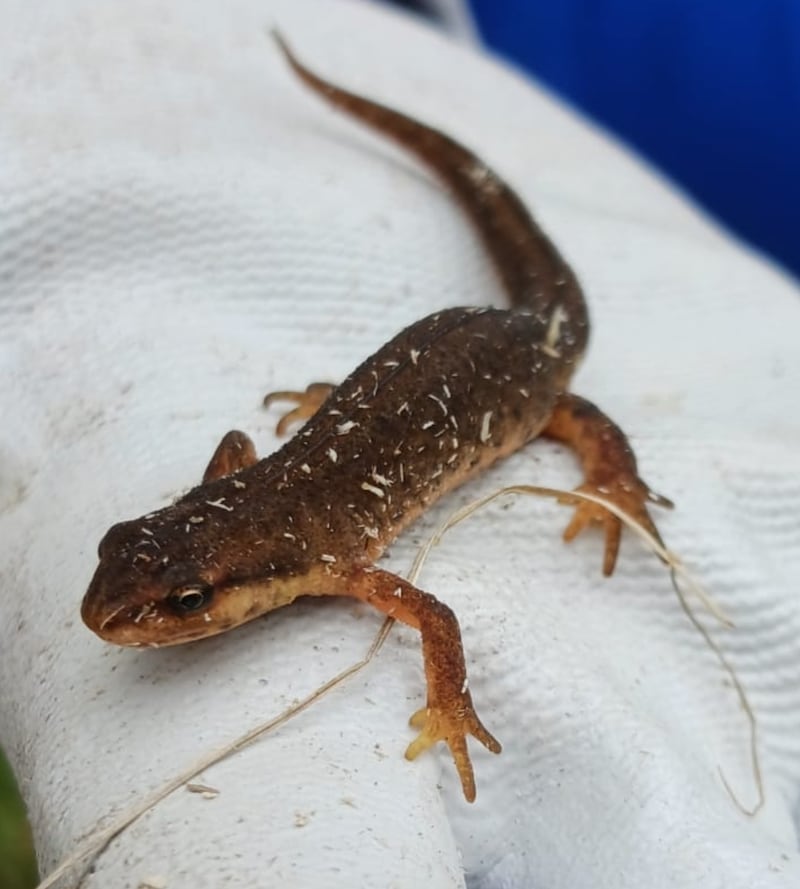
This is not a lizard – it is a smooth newt, which is an amphibian rather than a reptile. Both lizards and newts have the same shape and so sometimes it can be confusing. The newt has four toes on its front legs, whereas lizards have five. Newts come out from hibernation in March and go to ponds where mating and subsequent egg laying takes place. They then leave the water and spend the rest of the time on land, going into hibernation again in October, often in log piles.
RM Block
This wonderful creature landed on my windscreen. I assume it is a Daddy-long-legs. – E Maloney Foxrock
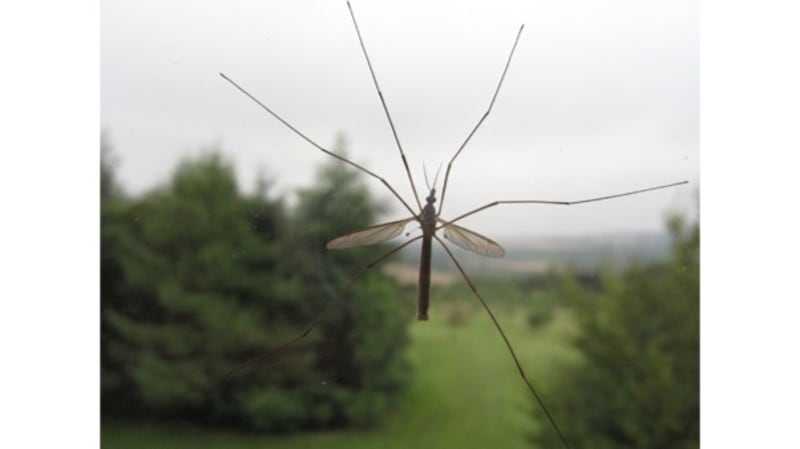
A mating pair was also seen by Aideen Ward on the wall of her house in Galway. This is a Crane fly, an insect with six legs and one pair of wings, which is commonly called a Daddy-long-legs in Ireland and a Jenny-long-legs in Scotland. Its young are grubs called Leather Jackets, that live in soil and feed on the roots of grasses. Adults rarely feed at all, and they do not contain any venom. They fly in autumn looking for mates and are often attracted indoors by lights.
This, and lots of its pals, occupy corners all over my house and spin webs with great rapidity. I assume it is a spider of some sort. – Tom Doogan Derry
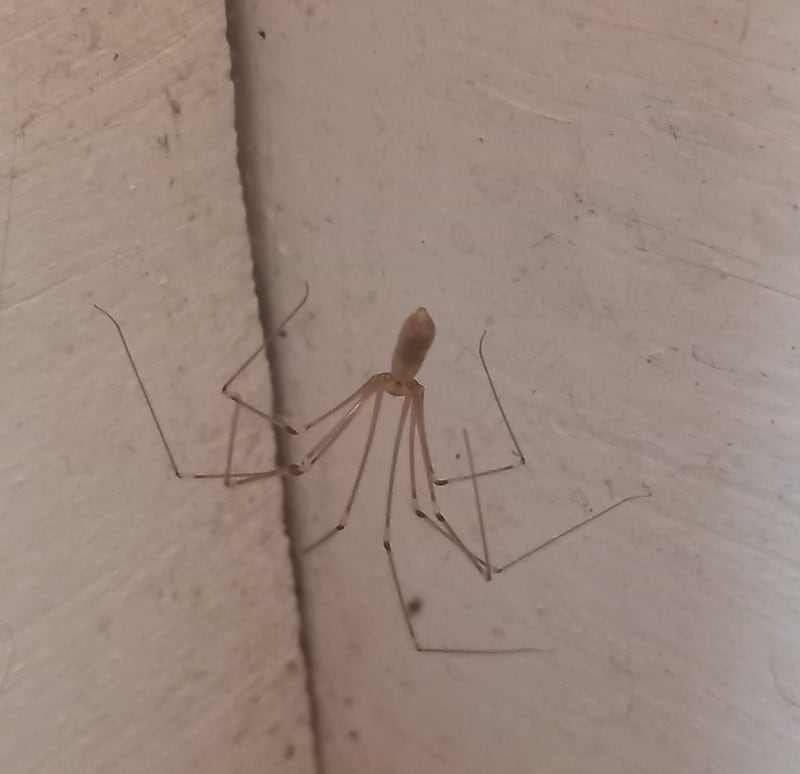
It is the Cellar spider, which spins a loose open web in the corner of rooms, where it hangs upside down waiting for prey. If disturbed, it vibrates rapidly within the web like a whirling dervish. Its distribution has expanded enormously in recent years due to climate change. Americans call it a Daddylonglegs Spider, thus leading to people on this side of the pond – who get their scientific information from American sources – confusing it with the Crane fly. This Cellar spider, like all spiders, has eight legs on its head and kills its prey by injecting it with venom.
These beautiful fungi were on some broken trees in Co Wicklow. They looked like coral. We hadn’t seen them before – do they only appear in summertime? – Ailbhe and Ruairí Ó Dubhghaill Dublin
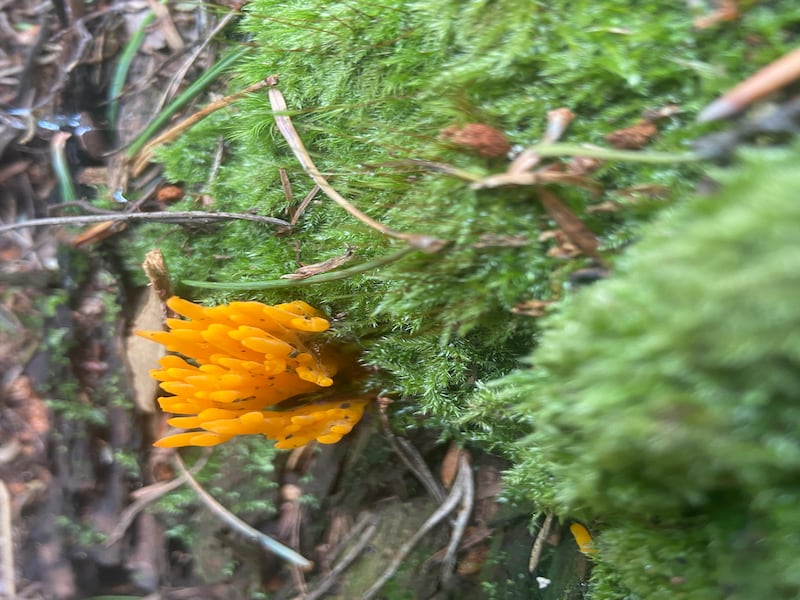
This is a developing cluster of Calocera viscosa – Yellow stagshorn. The tips are about to start branching. A rubbery, tough jelly fungus usually found growing on buried conifer wood among mosses. Widespread and common, it occurs from late summer to early winter.
What is this butterfly called? Is it a common species? – Anne Casey Co Westmeath
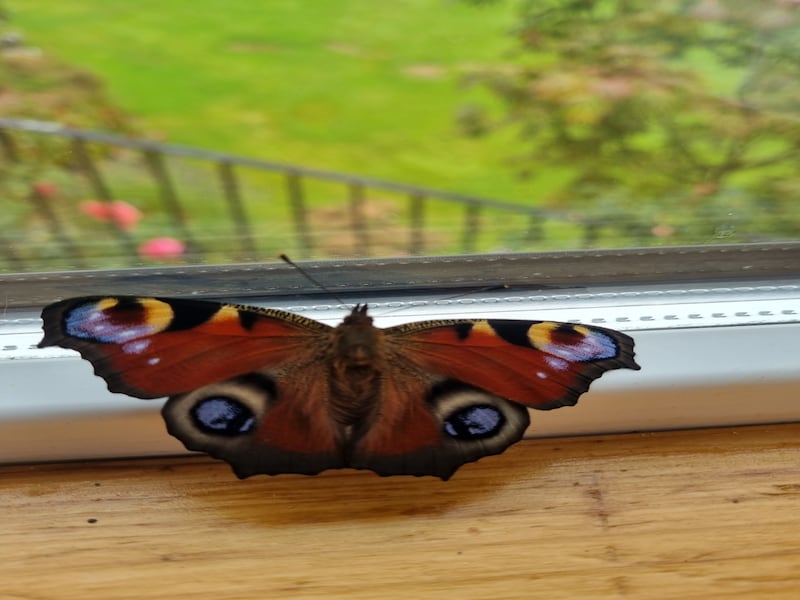
It is the Peacock butterfly – a common species of the general countryside. It overwinters as an adult in woods, sheds and hollow trees. Colin and Sue Wolfe sent in the following observation.
We were on the Dublin-Cherbourg ferry at the end of September. Around 23h, dozens of Peacock butterflies landed or flew around deck, possibly attracted by the bright lights. The ship was 120km south of Tuskar Rock and west of the English coast.
Only the Painted Lady and Red Admiral butterflies were thought to carry out return migration south in Autumn.
Please submit your nature query, observation, or photo with a location, via irishtimes.com/eyeonnature


















